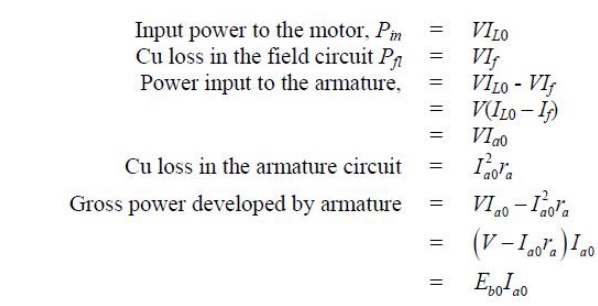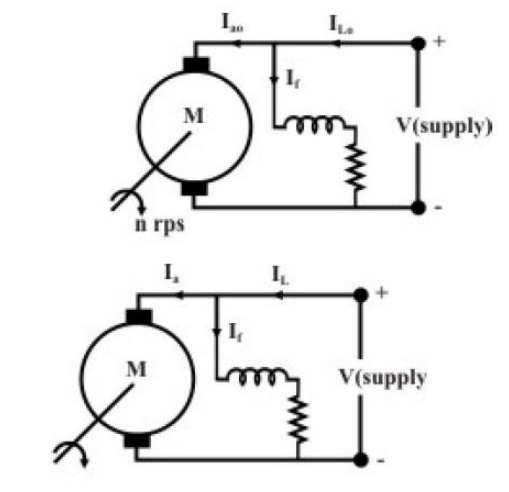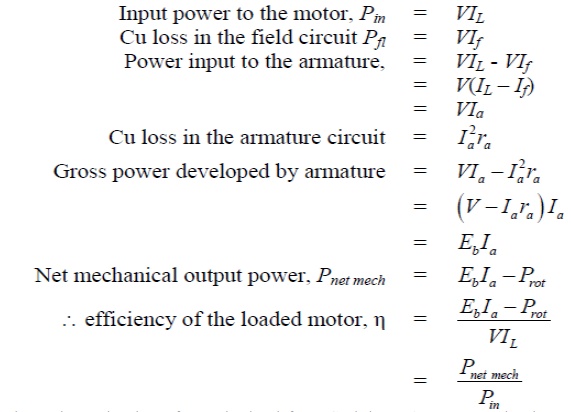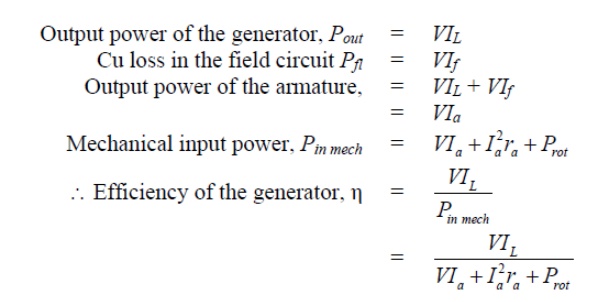Chapter: Electrical machines : DC Motor
SwinburneŌĆÖs Test
SwinburneŌĆÖs
Test
For a d.c shunt motor change of speed from no
load to full load is quite small. Therefore, mechanical loss can be assumed to
remain same from no load to full load. Also if field current is held constant
during loading, the core loss too can be assumed to remain same.
In this test, the motor is run at rated speed
under no load condition at rated
voltage. The current drawn from the supply IL0
and the field current If
are recorded (figure 40.3). Now we note that:


Since the
motor is operating under no load condition, net mechanical output power is
zero. Hence the gross power developed by the armature must supply the core loss
and friction & windage losses of the motor. Therefore,

Since,
both Pcore and Pfriction for a shunt motor
remains practically constant from no load to full load, the sum of these losses
is called constant rotational loss i.e.,

In the
Swinburne's test, the constant rotational loss comprising of core and friction
loss is estimated from the above equation.
After
knowing the value of Prot
from the Swinburne's test, we can fairly estimate the efficiency of the motor
at any loading condition. Let the motor be loaded such that new current drawn
from the supply is IL and
the new armature current is Ia
as shown in figure 40.4. To estimate the efficiency of the loaded motor we
proceed as follows:

The
estimated value of Prot
obtained from SwinburneŌĆÖs test can also be used to estimate the efficiency of
the shunt machine operating as a generator. In figure 40.5 is shown to deliver
a load current IL to a
load resistor RL. In this
case output power being known, it is easier to add the losses to estimate the
input mechanical power.


The
biggest advantage of Swinburne's test is that the shunt machine is to be run as
motor under no load condition
requiring little power to be drawn from the supply; based on the no load
reading, efficiency can be predicted for any load current. However, this test
is not sufficient if we want to know more about its performance (effect of
armature reaction, temperature rise, commutation etc.) when it is actually
loaded. Obviously the solution is to load the machine by connecting mechanical
load directly on the shaft for motor or by connecting loading rheostat across
the terminals for generator operation. This although sounds simple but
difficult to implement in the laboratory for high rating machines (say above 20
kW), Thus the laboratory must have proper supply to deliver such a large power
corresponding to the rating of the machine. Secondly, one should have loads to
absorb this power.
Related Topics